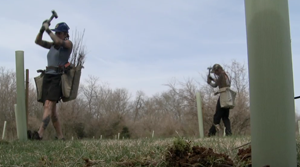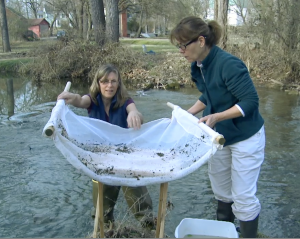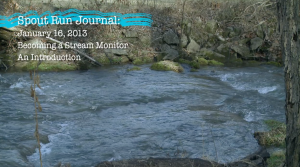Carter Hall Spring
November 8, 2014
It was a crisp November morning and over 20 volunteers from Clarke County and the surrounding community gathered on the banks of Spout Run to plant over 150 native trees and shrubs to improve habitat and do their part to restore this unique spring creek. On the heels of the stream restoration work completed in May, this volunteer tree planting was one of the last steps for this targeted restoration project on Spout Run near Carter Hall. Passionate volunteers young and old, including many TU members, enjoyed getting their hands a little dirty to make a difference for clean water. Thirteen species of trees and shrubs—all native to VA—were planted including American hazelnut, pin oak, black gum, and red osier dogwood.
Prior to this project, this reach of Spout Run suffered from unstable streambanks and signification streambank erosion. In the long term, the streambank stabilization and instream habitat restoration activities completed in May will be successful once a riparian buffer is established. Permanent rooted vegetation along streambanks is the most important factor for stream stability in the Shenandoah Valley. The trees these dedicated volunteers planted will help hold the streambanks in place, provide shade to the stream and cover for native brook trout.
Funding for this project was made possible by a grant from the Environmental Protection Agency and the National Fish and Wildlife Foundation, with support from Rapidan and Winchester Chapters of Trout Unlimited, and Project Hope.




